One of the most well-known raptors of North America, these magnificent creatures can be found in various biomes, including deserts, grasslands, agricultural fields, pastures, woodlands, rainforests, and even urban areas. While dazzling to behold, many curiosities surround these large predators regarding their survival and rearing of young.
While most species of hawks have similar behaviors regarding tending to nests, territory, and young, some species prefer slightly different approaches to these general behaviors. Information regarding some of the best-known hawk species will be evaluated, along with their behaviors toward mating.
Contents
Red-Tailed Hawk
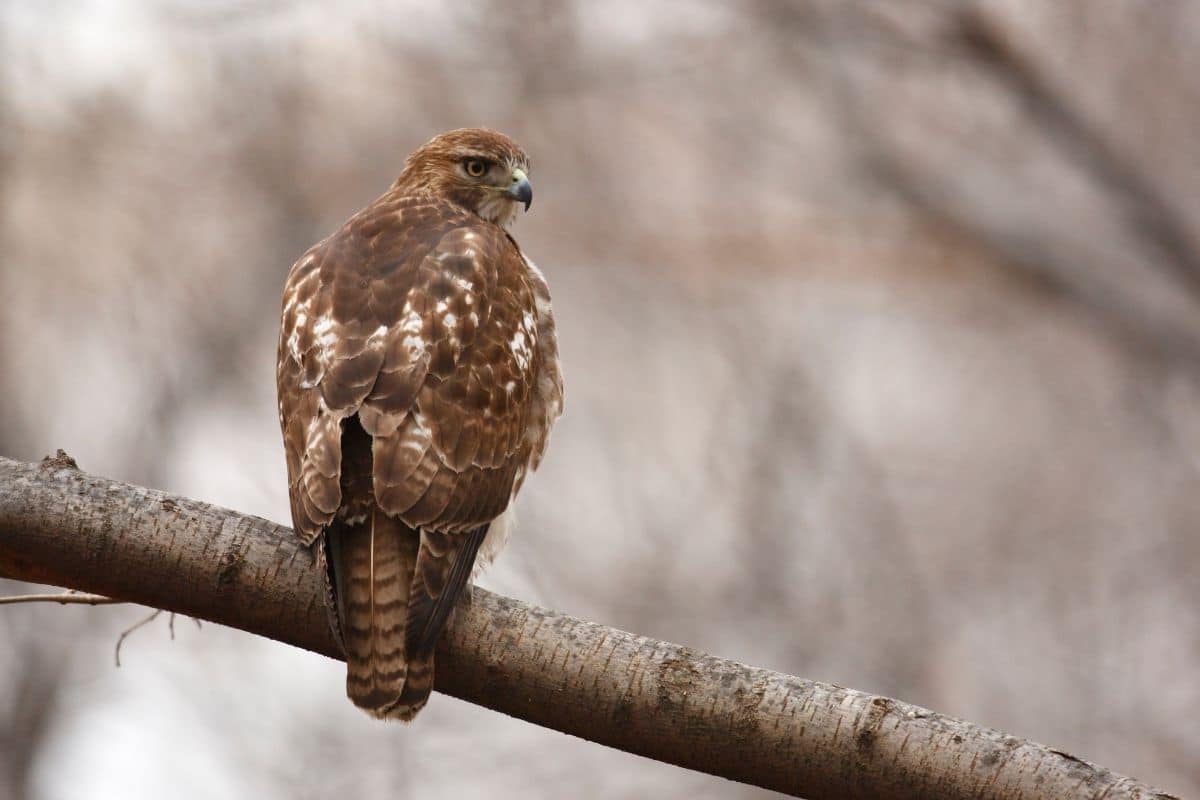
Red-tailed hawks are one of the most widely recognized in North America. They are widely distributed across the country and easily the most recognized due to the flash of brilliant red on their tails. With amazing adaptation skills and the ability to feed on a variety of small prey, it’s no wonder why these raptors are so extensively successful.
Courtship Behaviors
Red-tailed hawks mate only once yearly during the spring, performing breathtaking and dangerous aerial maneuvers to win over their mate. Two hawks in courtship will perform a series of dives and twists in mid-air, caressing one another and locking talons during the dangerous flight.
When a red-tailed hawk has selected its mate, it will bond for life and remain in a monogamous lifetime commitment if conditions allow. If one pair dies, the remaining red-tailed hawk will locate a new partner.
Nest Building and Maintenance
Once paired, red-tailed hawks will seek out a high area to construct their nest, usually around 120 feet from the ground. These locations can be on treetops, cliff edges, or even man-made structures.
Both the male and female will contribute to the construction of the nest. This creation will resemble a large bulk of thick branches and twigs lined with finer materials. Construction of these nests can take several days, but the same mated pair will reuse them throughout their lifetime.
If there is damage to the nest by the next breeding season, the pair will choose another location to rebuild.
Nurturing and Raising Young
Just as a bonded pair of red-tailed hawks will construct their nest together, they will also play supportive roles in raising the young. The female will remain with the chicks most of the time during their first few weeks of life, while the male busies himself with providing food. The female will pick food apart into smaller chunks to aid the chicks in feeding but will eventually simply drop off food for them to feed themselves once they reach around 4 to 5 months of age.
Cooper’s Hawk
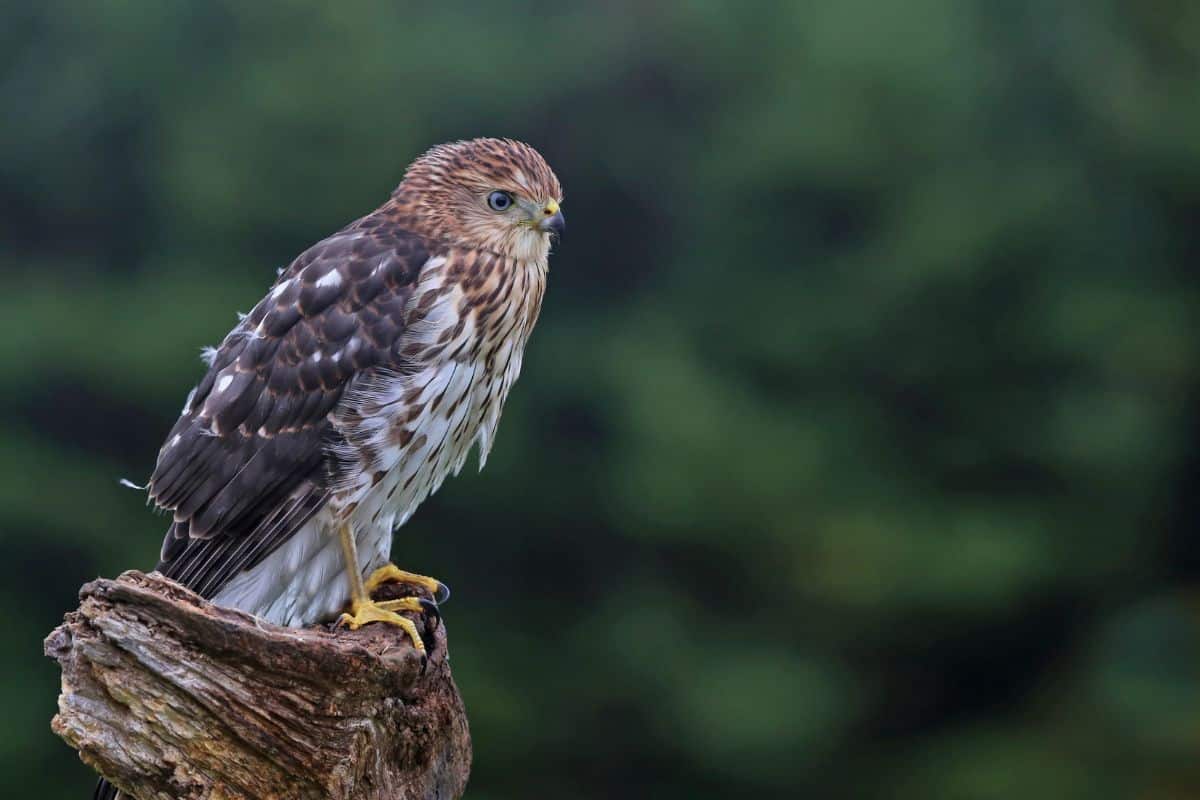
These hawks can be found throughout southern Canada and the United States and are most often spotted in mixed forests and open woodlands environments. They are noted for their broad head and shoulders and rounded tail. Known for their swift flying and keen sight, these hawks are adept at snagging prey while flying at high speeds.
Courtship Behaviors
Cooper’s hawks prefer to remain with their mated pair for life and will breed once per year. Their courtship ritual includes flying in deep arcs while performing mid-air maneuvers. The male will be responsible for selecting the nest location while the female tends to the construction.
Nest Building and Maintenance
The male will make the journey to collect and turn in the appropriate materials for nest building. While the male Cooper’s hawk will bring the best construction material, the female is in charge of weaving and placing the materials to form a secure nest for laying her eggs.
Then, while she incubates her three to six eggs clutch, the male will provide her with food and further incubation material.
Nurturing and Raising Young
When the young hatch, both parents will contribute to raising them. Tending will continue until the chicks are old enough to leave the nest or reach full independence around eight weeks. After that, the mated pair will continue to defend their territory together until the next breeding season.
Northern Harrier
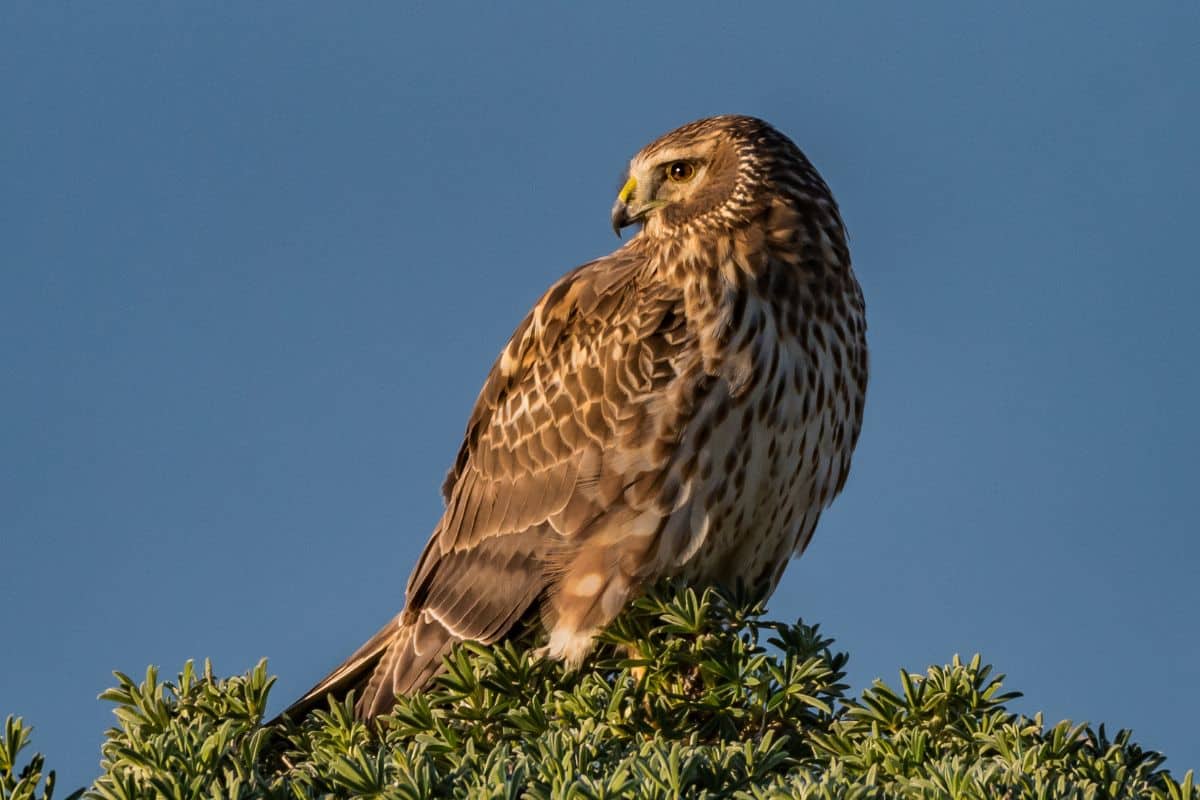
Northern harriers are medium-sized raptors that bear an owl-like face and are known to prey on mammals and smaller birds. Males flash a gray coloration, while females and juveniles will appear a rustic brown.
Courtship Behaviors
Unlike the bonded-for-life pairs of many hawks, not all northern harriers will not mate for life. Some males will have anywhere from 2 to 3 females in a single season and will not mate for life.
Instead, males perform an aerial display and then take a flight to an appropriate area for nest building while interested females, if any, follow. Females often abandon them if the male does not sufficiently provide food or nesting materials during the breeding season.
Nest Building and Maintenance
Males and females will generally contribute to constructing the nest, which is usually located on the ground in open areas. The pair will build in a dense or shrubby location to reduce the risk of dealing with predators and will continuously add to the insulation and overall building of the nest even after the chicks are hatched.
Nurturing and Raising Young
Both northern harriers will contribute to feeding the young, though polygamous males that take on more than one mate per breeding season may leave their nests more vulnerable. Ultimately those pairs that do choose to mate for life tend to have a higher survival rate for their young as they are to better feed their chicks and are more able to keep predators at bay.
Sharp-Shinned Hawk
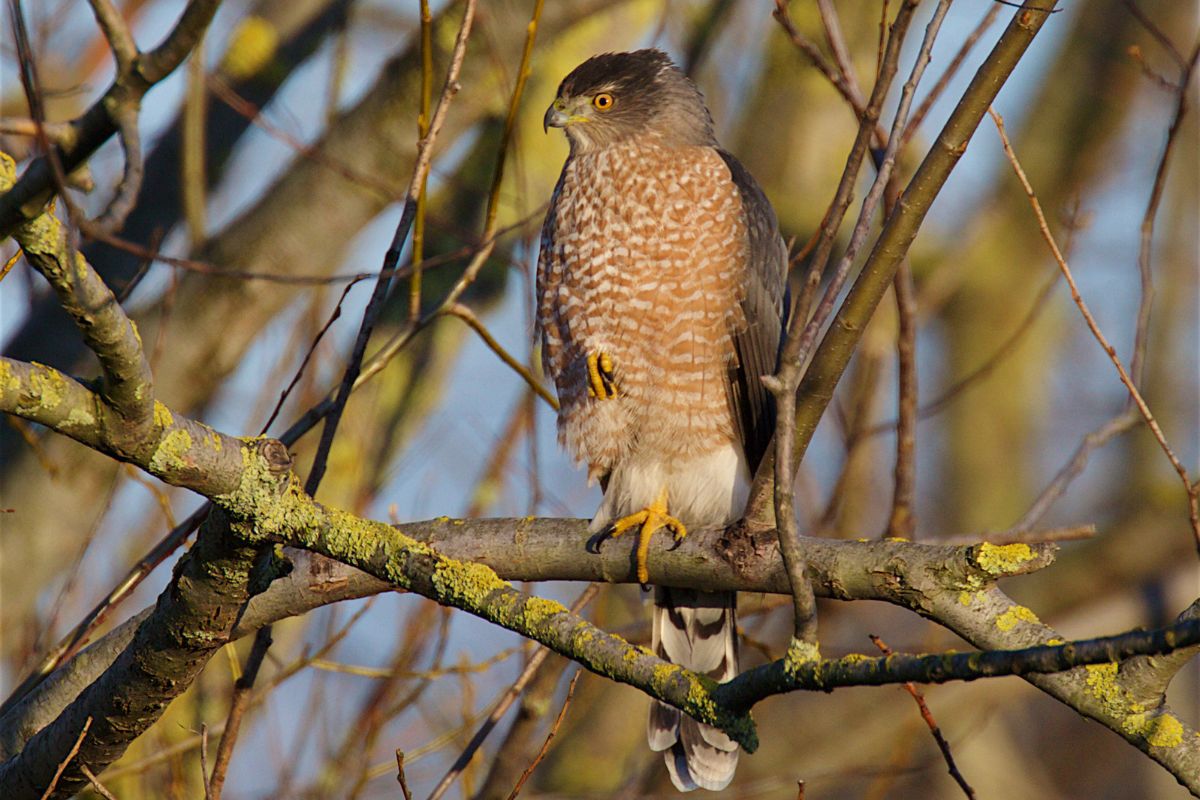
These hawks are relatively tiny, being the smallest type of hawk in Canada and the United States, but where they lack in size, they certainly make up for in speed. Being adept surprise hunters, these hawks will prey on anything they can sneak up on and grasp in their claws.
Sharp-shinned hawks are even known to stalk and hunt at backyard bird feeders, sweeping away their prey and taking them to a low branch to pluck and consume.
Courtship Behaviors
When seeking a mate, sharp-shinned hawks will circle and cry out before performing swift dives to impress a partner. When a mated pair is decided, they will remain together for life and will isolate themselves to their territory.
Nest Building and Maintenance
Nests are built by both the male and female in very concealed areas, sometimes built atop old squirrel or crow nests. While the female works on perfecting her nest and incubating her eggs, the male will deliver food to her, and together they raise their chicks while ensuring all needs are met.
Nurturing and Raising Young
While the female will stay with the chicks during their early weeks of life, the male will continue to provide food for the family. After about 3 to 4 weeks, the young will be large enough to move around the branches of the tree their nest is settled in and will eventually leave to start their own lives at about 5-6 weeks when they are able to take flight.
Conclusion
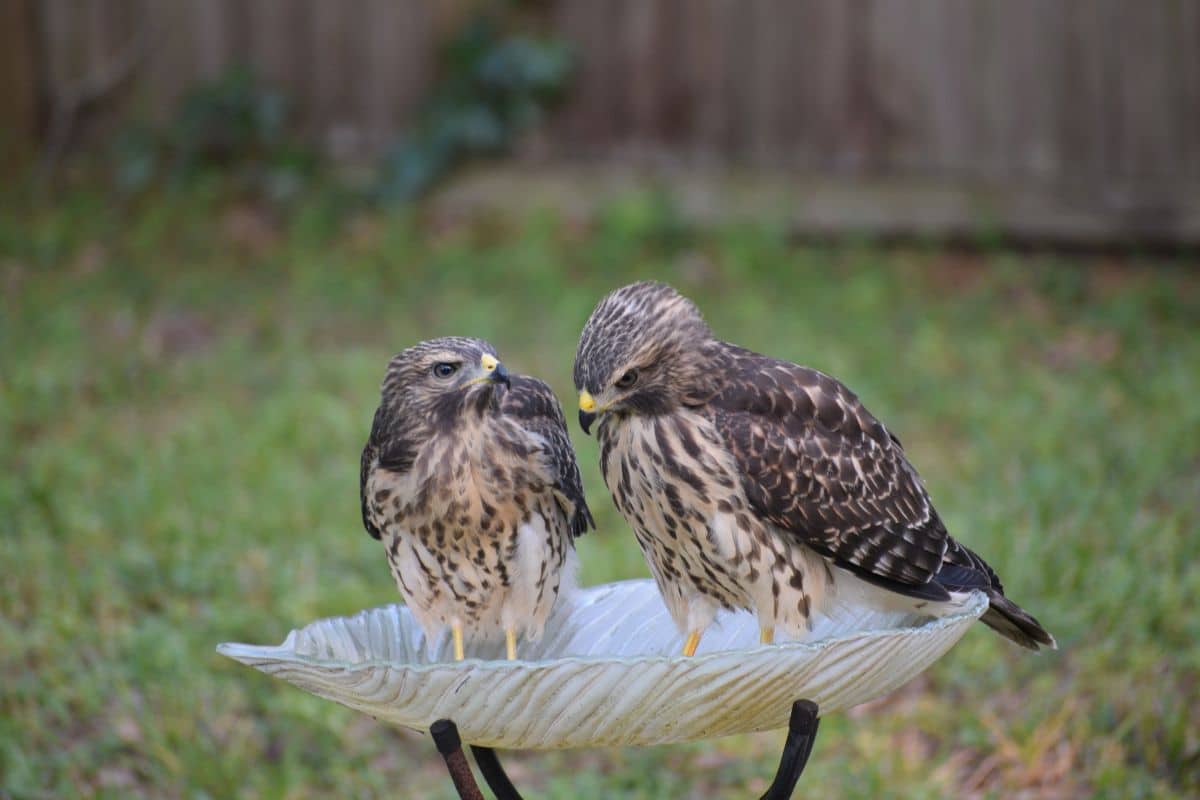
While not all species of hawks will remain in a mated pair for life, many of them do so for the benefit of their own survival and their young. Those that do remain in a bonded pair have established territory in which they can thrive and often have a solid nest to revisit for every breeding season.
It’s no wonder these amazing animals can maintain a lengthy lifespan and benefit the ecosystem with successful broods that they worked diligently to raise together.
